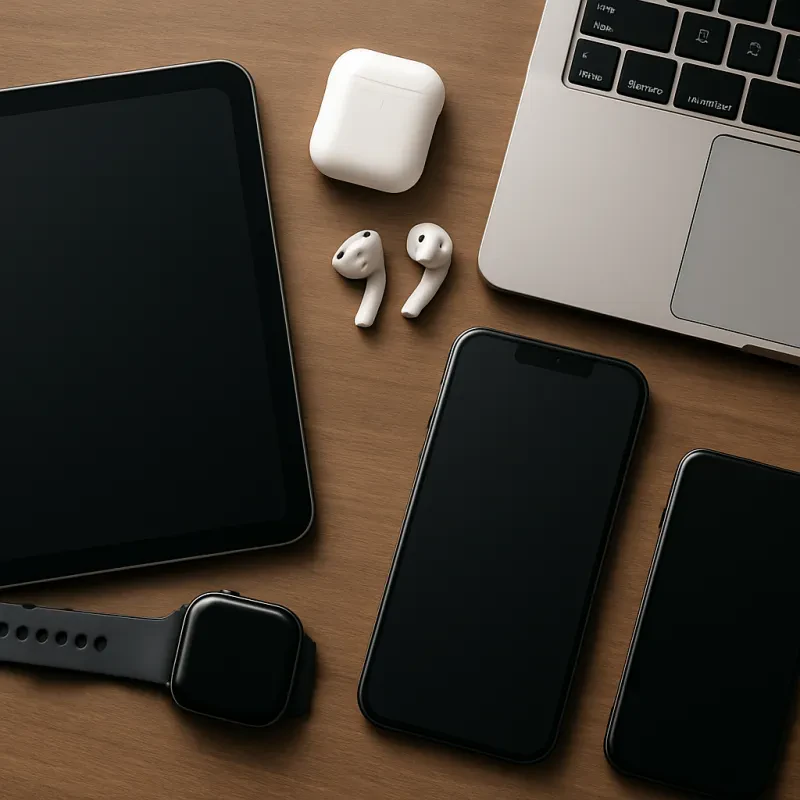Let’s start with the basics: what are computers, and how do they fit into our daily lives? At their core, computers are machines designed to process data. This means they can take in information, perform calculations, and give you results quickly. Today’s tech world has evolved so much that we can use computers for everything from browsing the internet to playing games and even running businesses!
When you think about a computer, you might picture a large desktop set-up. But computers come in various shapes and sizes. There are laptops, tablets, and even smartphones—all of which have computing power. The tech behind them is designed to help you connect with others, learn new things, and get tasks done efficiently. Whether you need a powerful machine for graphic design or a simple one for internet browsing, there’s a computer out there to fit your needs.
Understanding the components of computers can help demystify tech. Key parts include the processor, which acts like the brain, and the memory, which stores information for quick access. Additionally, the hard drive is where all your files live. When you're shopping for computers, think about what specs matter most to you. How much storage do you need? What kind of tasks will you be using it for? These questions will help you make the best choice.
Finally, keep in mind that the world of tech is constantly changing. New innovations and features come out regularly. Staying updated with the latest trends can make your computer experience smoother. Don’t hesitate to dive in and explore different models and technologies. You’ll find plenty of resources online to help you navigate today’s computers and tech landscape!
Key Features to Look for in Devices
When it comes to choosing the right devices in today's computers and tech landscape, there are a few key features you should keep in mind. These features can make a huge difference in how well your device meets your needs, whether you’re using it for work, school, or play.
1. Performance: Look for the latest processors and enough RAM to handle multitasking. For everyday tasks, a modern dual-core CPU and at least 8GB of RAM should do the trick. If you're into gaming or video editing, consider going for higher specs to ensure everything runs smoothly.
2. Storage Options: Think about how much space you actually need. Solid State Drives (SSDs) are faster and more reliable compared to traditional Hard Disk Drives (HDDs). If you store a lot of photos, videos, or games, look for a device with at least 256GB of SSD storage.
3. Display Quality: Whether you’re watching movies or working on detailed projects, you’ll want a good display. Look for high-resolution screens, ideally Full HD (1920x1080) or better. If you’re into design or gaming, consider devices with color-accurate panels and faster refresh rates.
4. Battery Life: Nobody wants to be tethered to a power outlet all day. Check how long the battery lasts under normal use. A device that offers 8 hours or more is ideal for staying productive on the go.
5. Connectivity: Make sure your device has all the ports you’ll need. USB-C, HDMI, and headphone jacks can come in handy, especially if you like connecting to different devices or using peripherals. Also, don’t overlook Wi-Fi capabilities—look for the latest standards to ensure fast and reliable internet speeds.
Common Tech Issues and How to Fix Them
In our day-to-day lives, computers and tech can sometimes throw us a curveball. Whether it’s your laptop acting sluggish or your printer refusing to cooperate, it can be frustrating. Don’t worry; you’re not alone! Let’s tackle some common tech issues and how you can fix them without pulling your hair out.
One of the most frequent problems is a slow computer. If your device feels like it's moving in slow motion, it might be time to clear some space. Here’s a quick to-do list:
Another headache many face is printer issues. If your printer won’t connect or is refusing to print, check these steps:
If you're dealing with a Wi-Fi connection that keeps dropping, that can be a real nuisance, especially with so many of us relying on our devices. Try these quick fixes:
Essential Tips for Choosing the Right Gear
Choosing the right gear in today’s computers and tech landscape can feel overwhelming. With so many options available, it’s important to focus on what really matters to you. Here are some essential tips to help you make informed decisions.
1. Know Your Needs
Before you start browsing, think about what you want your gear to do. Are you gaming, working from home, or just browsing the web? Different tasks require different specs, so make a list of your main activities. This will help you narrow down your choices.
2. Set a Budget
Tech can get pricey, fast. Decide how much you’re willing to spend. Remember, you don’t always need the latest model to get great performance. Look for previous generations that still pack a punch but come at a lower price.
3. Do Your Research
Check online reviews, watch videos, or ask friends for recommendations. User experiences can provide valuable insight. Websites often have comparison tools, allowing you to see how different computers and tech gadgets stack up against each other.
4. Consider Future-Proofing
While it’s tempting to stick with the basics, consider investing a bit more for future-proofing. This means getting a device that can handle upgrades or updates down the line. It’s a smarter move if you plan to keep your gear for a few years.



